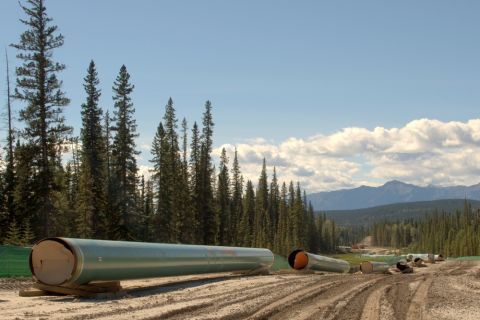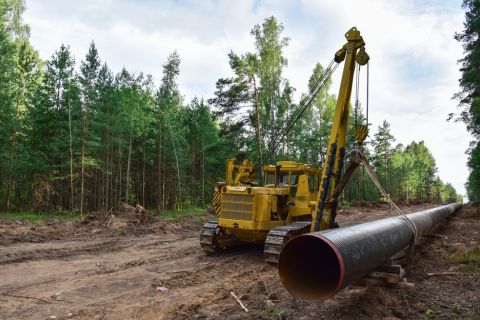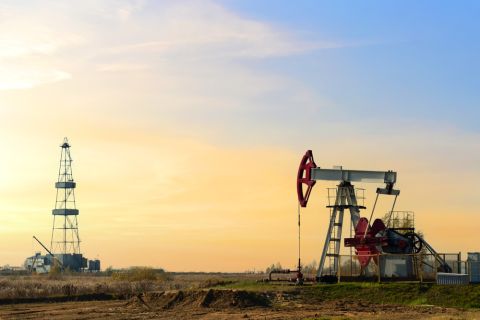
Are oil and gas producers likely to rush to commit to long-lead-time, ultra-deepwater projects? Given concerns over the “energy transition,” Bernstein believes the answer is “no.” (Source: Hart Energy/Shutterstock.com)
[Editor's note: A version of this story appears in the January 2020 edition of Oil and Gas Investor. Subscribe to the magazine here.]
As we look back on 2019, and ask ourselves where the industry is headed, we may wonder where we may find wisdom. Might it come from a 16-year-old from Sweden, delivering an impassioned speech to the United Nations; or perhaps a respected CEO of an integrated producer with assets in some 60 countries, retiring after a career spanning some 40 years in energy?
Bob Dudley, due to retire in February from his position as group CEO of BP Plc, delivered a presentation last quarter in which he provided some thoughtful perspectives on the challenges facing energy. The world needed to “move to a low-carbon energy system,” he said, and it is the industry itself that “understands more deeply than many what the ‘energy transition’ entails.”
The departing BP executive defended the role of energy in the economy, and specifically natural gas as an ongoing fuel source for the future. Natural gas has “a vital role to play in the energy transition,” he said. And yet natural gas was in some circles being “increasingly marginalized, even vilified and demonized,” he said, despite emitting “half the carbon of coal when burned for power.”
Worldwide, switching from coal to gas “has cut more than 500 million tons of CO₂ this decade alone.”
Dudley described the challenges facing energy as painting a “complex picture,” with “no single answer.” Each individual fuel has different attributes, costs and benefits, he observed. “To succeed, we need every tool at our disposal. To exclude gas, when so much is at stake, is to take a huge and unnecessary risk,” he continued. And, of course, gas “is abundant. It’s affordable.”
BP has itself been moving forward with efforts to measure emissions at all its major oil and gas sites, with drones, cameras and lasers used to detect leaks that previously would have likely gone undetected, according to Dudley. “Methane leaks and flaring can and must be tackled.”
More recently, BP CFO Brian Gilvary cautioned against underestimating the global appetite for energy.
“What we need to recognize is 85% of the world’s energy today comes from coal, oil and gas,” said Gilvary in a Bloomberg interview. “Last year [in 2018], primary energy demand increased by 2.9%; that’s the highest we’ve seen in over a decade. We have 2 billion more people arriving on the planet over the next 20 years plus 1 billion more of today’s population who want access to power.”
Assuming BP’s sense of the durability of global demand is reasonable, why are prospects for energy producers seemingly so poor? How is it, for instance, that the market cap of Facebook—one of the FANG stocks—comfortably exceeds that of the entire E&P sector?
Investor has previously covered, among others, two near-term issues working against new money entering the energy space: the supply/demand imbalance in crude going into the first half of 2020, as well as uncertainty surrounding the 2020 U.S. election outcome (see “Downshifting to Make it Through 2020,” Oil and Gas Investor December 2019). Both issues loom large in the near term but may perhaps appear less formidable as investors look farther out, into 2021.
Clearly, there is a supply overhang as new production comes on from Norway, Brazil and Guyana in early 2020, but, as one analyst said, “this growth spurt is not sustainable.” To use the Johan Sverdrup project offshore Norway as an example, the field is ramping up to 440,000 barrels per day (bbl/d). But the long-lead-time project was almost a decade in the making, having been discovered in 2010.
A recent Bernstein report said global offshore oil production would peak in 2020, and “it might be a decade (if ever) before it returns to those levels.” Offshore supply is estimated at 27 MMbbl/d, with a 6% annual decline rate. Shallow and deepwater outputs are unlikely to return to peak levels, noted Bernstein, leaving ultra-deepwater projects to account for any growth.
Apart from the Zuluf phase 2 expansion by Saudi Arabia, most of the OPEC countries’ offshore projects have sub-50,000 bbl/d peak rates. In non-OPEC countries, the best visibility is from a pipeline of projects in Brazil, Guyana and the U.S. However, with the U.S. offsetting declines elsewhere, the net growth in non-OPEC offshore output comes to just around 2.5 MMbbl/d spread over the next 10 years to 2030.
Are producers likely to rush to commit to long-lead-time, ultra-deepwater projects? Given concerns over the “energy transition,” Bernstein believes the answer is “no.”
Recommended Reading
Imperial Expects TMX to Tighten Differentials, Raise Heavy Crude Prices
2024-02-06 - Imperial Oil expects the completion of the Trans Mountain Pipeline expansion to tighten WCS and WTI light and heavy oil differentials and boost its access to more lucrative markets in 2024.
US Gulf Coast Heavy Crude Oil Prices Firm as Supplies Tighten
2024-04-10 - Pushing up heavy crude prices are falling oil exports from Mexico, the potential for resumption of sanctions on Venezuelan crude, the imminent startup of a Canadian pipeline and continued output cuts by OPEC+.
Trans Mountain Pipeline Announces Delay for Technical Issues
2024-01-29 - The Canadian company says it is still working for a last listed in-service date by the end of 2Q 2024.
EIA: Oil Prices Could Move Up as Global Tensions Threaten Crude Supply
2024-02-07 - Geopolitical tensions in the Middle East and ongoing risks that threaten global supply have experts questioning where oil prices will move next.
The Secret to Record US Oil Output? Drilling Efficiencies—EIA
2024-03-06 - Advances in horizontal drilling and fracking technologies are yielding more efficient oil wells in the U.S. even as the rig count plummets, the Energy Information Administration reported.




